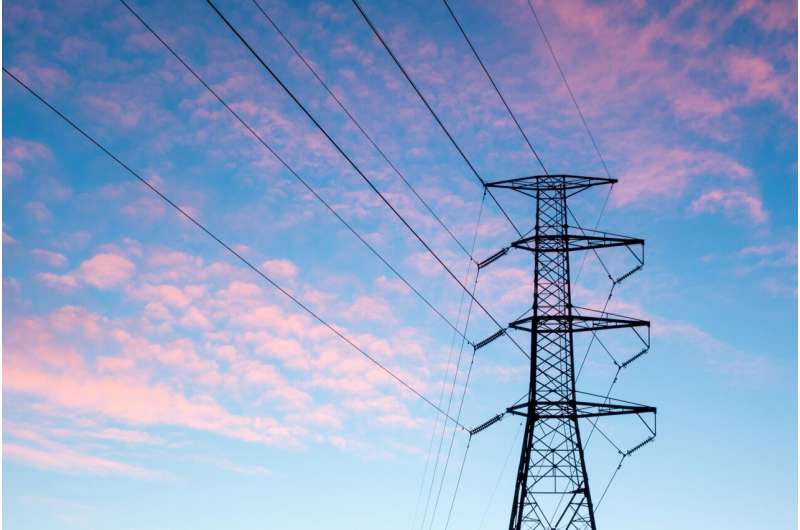August 28, 2025
The GIST AI could snuff out wildfires one power line at a time 
Sadie Harley
scientific editor

Andrew Zinin
lead editor
Editors' notes
This article has been reviewed according to Science X's editorial process and policies. Editors have highlighted the following attributes while ensuring the content's credibility:
fact-checked
trusted source
proofread

Annually, tens of thousands of wildfires ravage the United States, posing significant threats to people, wildlife, and infrastructure. A percentage of those wildfires are caused by degraded or downed electrical equipment. But what if artificial intelligence (AI) could detect the spark before wildfires even start?
Like any other infrastructure, power lines are susceptible to the elements and erode over time. This can result in a high-impedance (HiZ) fault, which is when an energized conductor like a fallen wire comes into contact with the ground, causing a short. Because the HiZ fault produces a small amount of energy, these faults are often not detected. But they can cause sparks that ignite flammable material in the area, which can ultimately lead to a wildfire.
A new NREL project designed to detect these faults using machine learning aims to combat this. Through artificial neural networks—a computational model used to mimic human intelligence and learning—utility companies can prevent disruptions to consumers while more effectively managing these potentially dangerous fire hazards.
"The intention here is to enhance resilience in the power system and to enable faster responses during extreme events," said Richard Bryce, a senior researcher in power systems at NREL and lead on this project.
"We want to provide utility companies with the tools for a more resilient power system with better reliability and security for customers that mitigates the potential for wildfires caused by high-impedance faults."
To achieve that, NREL partnered with multinational power management company Eaton, which conducted extensive evaluations in a simulated environment.
The scenarios accounted for various downed-conductor events, such as different ground surfaces like grass and gravel, moisture levels, common U.S. tree species, and other external considerations. The resulting data was shared with NREL's research team consisting of Bryce and fellow researchers Kumaraguru Prabakar, Matthew Reynolds, and Yuqi Zhou.
Leveraging NREL's grid simulation capabilities and field data from multiple U.S. utility companies, researchers were able to inject Eaton's test data into the computer-aided design platform PSCAD (Power Systems Computer Aided Design) to create a large dataset that included significantly more HiZ fault scenarios than what could be produced in the field or in a controlled laboratory setting.
These simulated HiZ fault scenarios and datasets were used to train an ensemble of artificial neural networks (ANNs). These ANNs were down-selected to be the most effective at identifying HiZ fault states, resulting in a tool that is all but ready for real power systems. Once the ANN ensemble detects a fault, utility companies can prioritize sending resources quickly to that area to reduce the chance of both power outages and wildfires.
"There were pieces that came together beautifully for this project in a way that's unique to NREL," Bryce said.
"We had testing through our partnership with Eaton that provided real data that is experimentally derived, and then we were able to leverage NREL's high-performance computing and machine learning to provide a solution to utilities which has a very significant, immediate real-world impact."
Now, the team is working with utilities across the country, as well as international partners, to generalize this technology, increasing the scalability of the algorithm to be broadly applicable in the United States and beyond.
Soon, AI may be the key to significantly improving the global energy infrastructure and enhancing grid stability, while decreasing the number of annual wildfires.
Provided by National Renewable Energy Laboratory Citation: AI could snuff out wildfires one power line at a time (2025, August 28) retrieved 28 August 2025 from https://techxplore.com/news/2025-08-ai-snuff-wildfires-power-line.html This document is subject to copyright. Apart from any fair dealing for the purpose of private study or research, no part may be reproduced without the written permission. The content is provided for information purposes only.
Explore further
Beyond flights: Airports could bolster grid security and adaptability shares
Feedback to editors









